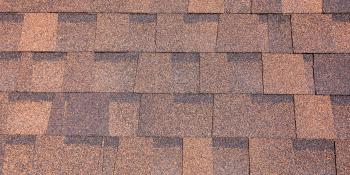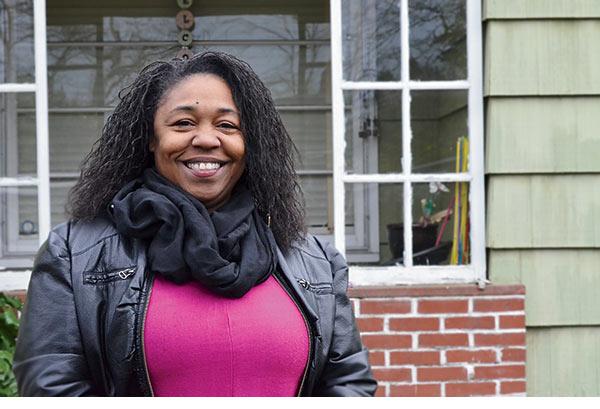
Health education and intervention
Yondella Hall is happy to call the Cully neighborhood in northeast Portland home.
She loves that her community has lots of kids growing up in it and that her neighbors are caring and look out for one another. But she worried that her home’s structural issues would threaten her ability to stay in the neighborhood she loves.

“At first I could see bubbling in the living room ceiling and wall,” Yondella says. “And then water started leaking through. I came home every day worried that my roof might collapse.”
Yondella heard about Habitat Portland/Metro East through her work as a family advocate at LifeWorks Northwest. When she shared her housing woes with a client, they suggested she check out Habitat’s home repair and preservation program. She soon learned that the leak in her living room was much more complicated than she initially thought.
“Habitat educated me not only on the repairs, but on the health issues, too. I didn’t know how leaking and standing water could affect my health.”
“I live in an older home, but I had no idea what this leak really entailed until Habitat came out,” Yondella says. “It wasn’t just the roof; it was the gutters and structural problems with the back porch. It was all these things I had no idea about.
Through a no-interest Habitat loan, Yondella was able to afford a new roof, gutter system and grading of her yard to mitigate the flooding of her porch and foundation when it rained.
Habitat also connected Yondella to Verde, an organization focused on building environmental wealth in communities. Verde installed a rain garden in her backyard, which will direct runoff from her roof and yard to sustain a beautiful and functional native plant garden.
“I used to get nervous when the rain came because I knew it would mean leaking and flooding,” she says. “Now, I get excited because I get to watch my rain garden grow.”
Yondella looks forward to many more years in her home and in the Cully neighborhood. “I love feeling connected to my community,” she says. “Habitat not only helped me repair my home, but it made me feel like a bigger part of the community.”
“A beautiful dream”
Fourteen-year-old Cristobal lives in a low-income neighborhood in Santiago, Chile. Cerebral palsy prevents him from moving his body. He cannot walk, and his hands have limited mobility.
In spite of his condition, Cristobal is an excellent student and has a loving relationship with his parents and grandparents, who all care for him together and live under the same roof.
Recently, Cristobal received an electric wheelchair that will greatly contribute to his well-being and autonomy. The wheelchair, however, did not fit into the family’s house.
That’s where Habitat Chile was able to make a difference. Through their “Our Children Return Home” program, local and Canadian Habitat volunteers helped the family make their home wheelchair-accessible.
“This is a beautiful dream that came true,” says Cristobal’s mother Claudia. “For the first time, Cristobal will be able to move around his house in his wheelchair and have access to every room. He can be more independent.”
The Our Children Return Home program is designed to help families with children who have special needs or severe illnesses by building, adapting or improving their homes. The goal is a safe, sturdy house that allows these children to remain with their families, instead of in a hospital or a shelter, thus improving their quality of life.
Cristobal is living, smiling proof that it works.
Subscribe to our monthly newsletter
Get the latest Habitat news, volunteer opportunities, DIY tips and more ways to get involved.